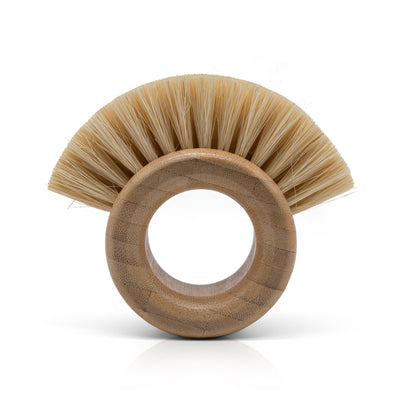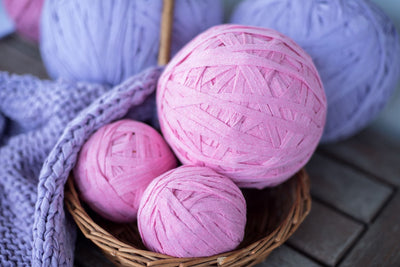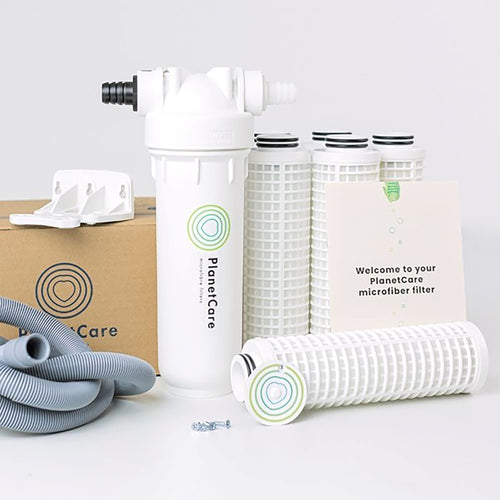The environmental price tag of laundry is rather hefty. Washing machines, driers and heated towel rails guzzle electricity, while chemical laden detergents wreak havoc on aquatic environments. Laundry (despite being boring!) is a necessity in today’s society, which is why we’ve created Chimney Sheep’s ultimate guide to eco-friendly laundry. Our comprehensive guide to swaps and changes you can make to ensure your laundry routine is as environmentally friendly as possible!
Is doing laundry bad for the environment?
There’s lots of things to think about when considering the question: ‘Is laundry bad for the environment?’ The typical daily wash routine could be considered quite environmentally taxing, with different aspects effecting the environment in different ways, because of this we’ve broken it down for you:
The average wash routine:

- Typically done daily (if not a couple of loads per day) – your average washing machine uses around 3 kWh of electricity per 40 degree mixed wash. This equates to 0.7kg of carbon dioxide released per wash! If done daily this is 255.5 kg of carbon dioxide per year.
- Wet laundry is then lumped in the drier, an hours drying cycle in a typical drier uses approximately 4.5 kWh of electricity. This is the equivalent of 1.8kg of CO2 or if used every day 657kg of CO2 per year.
- That one hour cycle in the dryer didn’t quite do the trick though did it? So you pop the still pretty damp laundry on the radiator to thoroughly dry through. Using your radiators to finish off your washing uses around 2kWh of electricity per hour. So, even just an hour on that warm radiator is equivalent to releasing 0.4kg of carbon!
Typical laundry products:
- The most popular laundry products in today’s society are convenient chemical liquids, pods and powders – all promising reliability, bright whites and bacteria free laundry. However, they tend to contain both phosphates and surfactants which are toxic to aquatic life. When detergents finally hit the water table, they react adversely causing large algal blooms which starve fish and other water residents of oxygen, as well as stripping vital mucous from the skin of fish and invertebrates .
- Then you’ll pop a dryer sheet in the dryer! Dryer sheets are polyester based, and the plastic content is almost always virgin (brand new plastic). They’re difficult to recycle, impossible to biodegrade and contribute significantly to the worlds plastic pollution problems.
- All the containers are plastic! Even the plastic pegs are wrapped in plastic! Laundry products equal plastic, lots and lots of plastic. If the detergents don’t contain petroleum based compounds innately, they are certainly housed in plastic. Plastic pollution is one of the worlds biggest environmental issues. It causes all kinds of issues, from contaminating the ocean and harming wildlife, to draining the world’s oil supplies, and when it’s burned it creates all types of toxic fumes as well as contributing significantly to the greenhouse effect and global warming – we can go on and on about plastic!
Typical laundry loads:

- Often split into lights, darks and special materials, laundry loads are small and frequent. The need to split our clothes into all the different colours and types means that on the whole, we are doing laundry way more often than we need to. This is wasting lots of time and precious energy, as well as water. It’s no wonder with all the different washing machine temperatures and settings that we feel the need to split everything up. But, apart from a few extra special fabrics (which we’d say may well need handwashing) almost all clothes will wash perfectly on the cold setting with minimal spinning.
- A large proportion of all clothing we wash now comes from fast fashion brands, in 2019 fast fashion was worth a whopping £42 billion, and it’s growing on average 8% per year. The issue with fast fashion and laundry comes down to how the garments are made. Not only are the working standards questionable, but an average white cotton T shirt takes nearly 2700 litres of water to produce, and fast fashion brands are producing hundreds of thousands of these per day , with 10,000 items of clothing going to landfill every 5 minutes. So, by adding fast fashion items to your wardrobe (or washing machine) it’s helping to keep these water wasting tycoons afloat.
- To keep things cost effective, many fast clothing brands choose synthetic dyes and materials. Synthetics are easy to mass produce, as well as cheap to make. Almost all are derived from waste products of petroleum and oil. Unfortunately this further increases the carbon footprint of the fast fashion industry, as well as leaking associated byproducts into the ecosystem.
Eco-friendly laundry alternatives:
So, what changes can we make to improve our laundry routine?
Eco-friendly detergents
Firstly, swap out that chemical filled laundry detergent with some of our natural biodegradable choices!

- The laundry powder we recommend is BioD’s eco-friendly washing powder, it’s effective, natural and completely biodegradable, use this in conjunction with BioD’s lavender fabric conditioner for a soft fresh finish.
- If you’re after an all in one, we have our brand new Earth Breeze liquidless laundry detergent sheets, providing you with a lovely spring scent and powerful clean.
- For keeping whites bright, or removing stubborn stains we also have Ecover Laundry bleach, super effective yet biodegradable.
You could go one step further and ditch detergent all together for soap nuts or laundry balls – these reusable devices remove the need for detergent all together and wash your clothes using good old fashioned elbow grease and water.
Reduce dryer usage.
If the dryer is the biggest user of energy when it comes to doing the laundry, why not dry your washing outside, protected with a Laundry Mac? The Laundry Mac laundry cover allows you to dry your washing outside, even when the weather isn’t looking great. It’s a durable waterproof rotary drier cover which stops the rain from re-wetting your washing, perfect for those days of patchy sun and rain.
Save energy on the wash cycle.

Hand wash where you can. The biggest way to save energy when using the washing machine, is to eliminate the machine – but that’s very idealistic. Washing on cold, on a short cycle with minimal spins, with a full load on board is the most eco-friendly way to use the washing machine. Use it as infrequently as possible, which could involve wearing clothes more than once if they’re still clean.
Stop microplastics.
So ideally this one requires a change in shopping habits as well as laundry routine. Buy natural where possible, and where it’s not consider filtering out microplastics from your waste water. Microplastic filters are a fit and forget way of reducing the amount of plastic waste that enters the sea – some brands even collect the waste cartridges for you! Microplastics are entering the eco-system at an alarming rate, a large proportion of which is from clothing. Ingesting microplastics can kill fish and other aquatic life. Not only this, but having microplastics in our seas has led to these microfibres entering our food chain, meaning humans are slowly digesting more and more pieces of plastic!
We actually have our own curated range of eco-friendly laundry products available for next day dispatch on our website. We’ve carefully chosen all of these products for their efficacy, performance and cost-effectiveness, making them high quality, accessible choices.
Making eco-friendly laundry accessible
We understand that the perfect eco-lifestyle isn’t accessible for all. Here at Chimney Sheep we’re not advocating for perfection, we’re striving to make effective environmentally conscious options accessible- so here’s our suggestion for a better, more eco-friendly laundry routine – one that’s accessible!
A better laundry routine:
- Only run the wash when you’ve a full load, and choose a setting that’s a lower temperature with less spins, (don’t be afraid to mix colours – use an eco-friendly colour catcher if need be) this will use significantly less energy than doing frequent hot washes – it’ll help bring down your energy bill too!

- Use any brand of eco-friendly, non-toxic, biodegradable washing powder rather than chemical filled traditional detergents, there are some affordable yet effective alternatives out there.
- Make sure you’re using the correct amount of detergent! All so often people are using far too much, it’ll make your laundry liquid last longer as well as reduce the amount of waste that enters the environment.
- Consider drying your laundry outside on the rotary drier if possible, only using the drier when you really have to.
- Pick recycled pegs, or pegs made from a renewable material – a cheap, effective and easy alternative.
- If you need to dry your laundry on the radiator – use an airer to improve air circulation over your laundry and speed up the drying time.
- If you don’t want to give up your dryer, why not make it more efficient? Consider using some cheap, non-toxic, 100% natural wool balls, these disperse your laundry in the dryer meaning it dries quicker.
- Install one of our microfibre / microplastic filters! Once in place it catches nearly all of the microfibres that have jostled from your clothes during the wash cycle.
But most of all make eco-conscious choices in line with your own routine, if everyone does a little, collectively together we can achieve a lot. So, if we all make little changes to our laundry habits, we’ll be significantly reducing our carbon output as well as aquatic pollution.



















